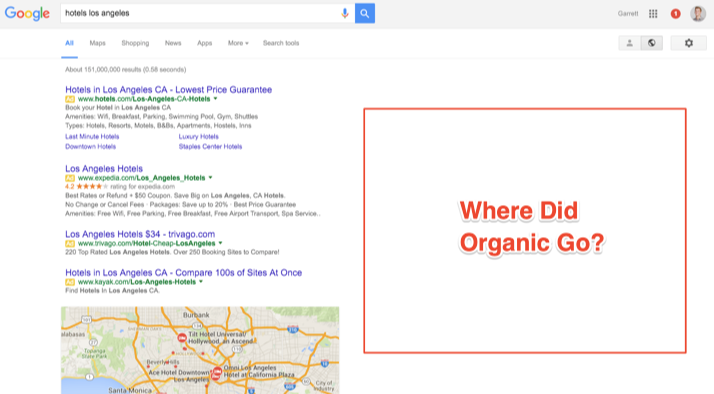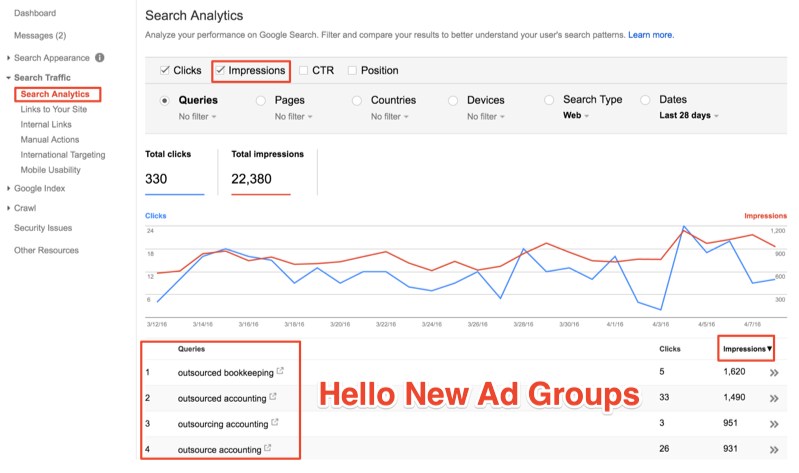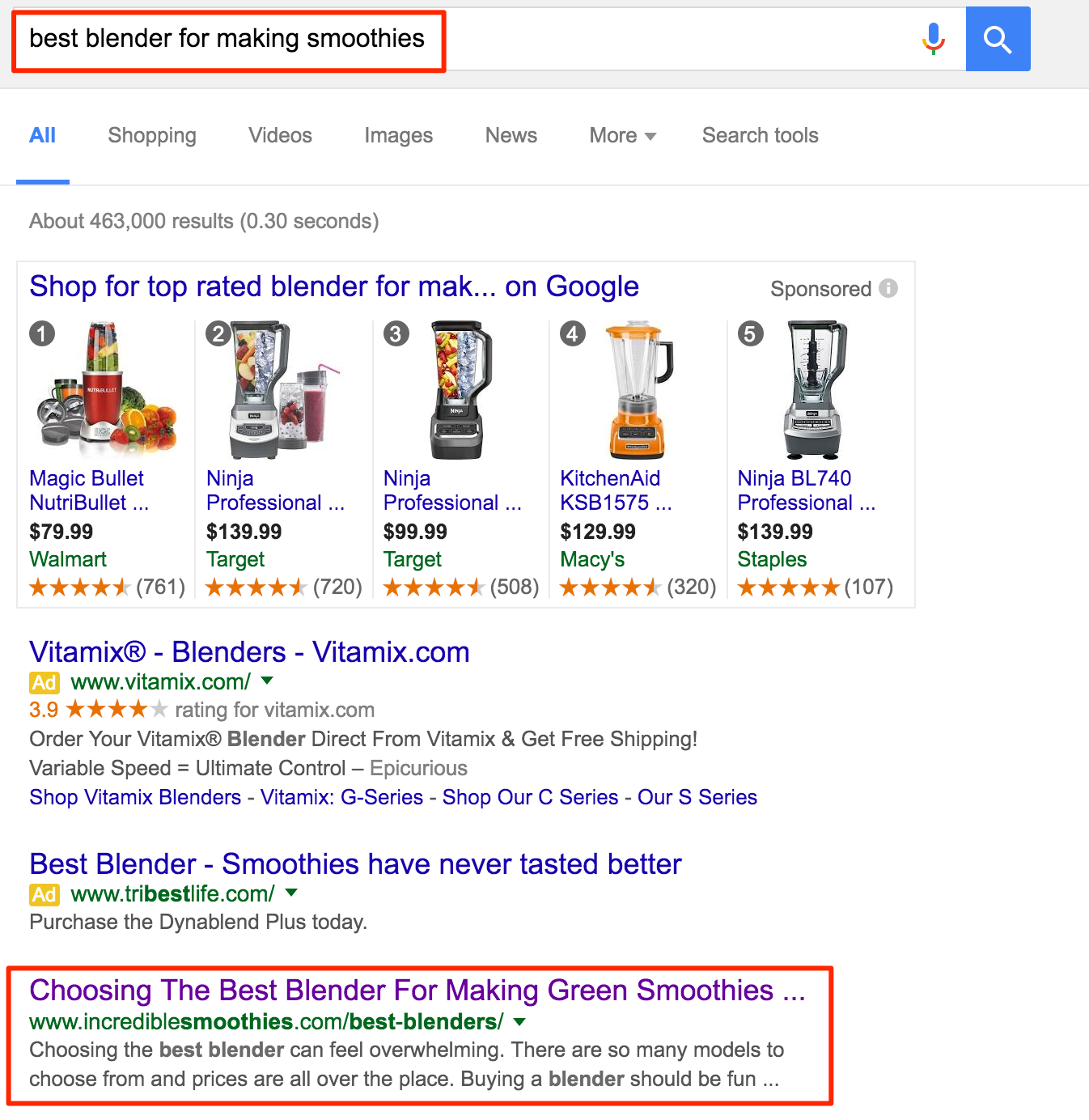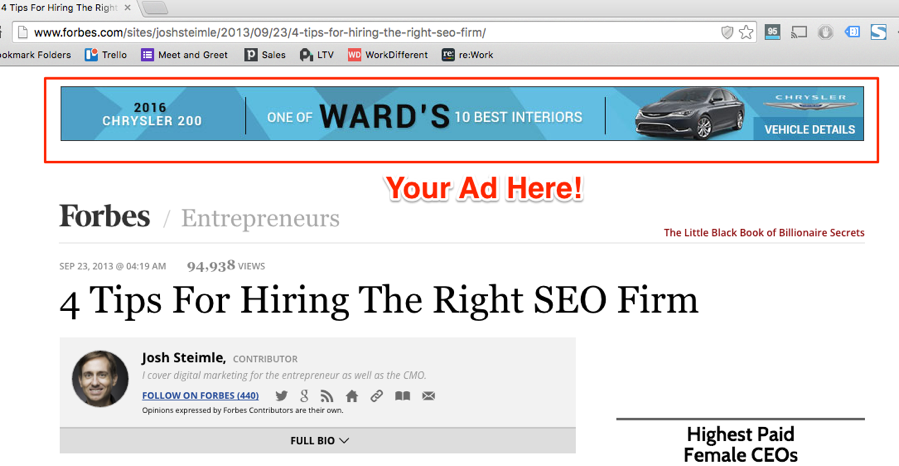Whether you work at a small business or a fortune 500 company, obtaining and utilizing data for your search campaigns is crucial. Conveniently, Google is making you pay for this data by forcing you to use AdWords to get conversion data at a keyword level.
The struggle gets deeper though. Because whether you're in-house or you are working at an agency, the PPC and SEO teams struggle to communicate with each other. They operate isolated from each other, unable to properly leverage their most important assest: first party data.
We are going to dive into actionable ways you can correctly utilize data from both SEO and PPC to ultimately increase your conversion rate and decrease your cost per acquisition.
We will touch on the following three techniques for practical takeaways on how to integrate your search channels:
- Using Keyword Rankings as a Signal for Dataless PPC Campaigns
- Leveraging PPC for Content Marketing to Answer User Intent
- Using Google Display Ads to Hack Key SEO Terms
In the end we are going to wrap all of these tactics together and provide a gameplan for cross-channel success.
Google Stole The Data. Now What?
Google is an ad engine. They are not a search engine operating without a financial objective. As Google evolves, they are constantly taking more SERP real estate.

As Google daily takes more room above the fold, they also have restricted the availability of free keyword data. While there are plenty of tools that allow for keyword tracking (Moz, SEMrush, Advanced Web Ranking, etc.), none of these tell you the most important piece of data:
Which keywords are converting…
In order to obtain this data, we have to pay. Pay Google via AdWords to be exact. By having access to Google's keyword data, we can prioritize our SEO efforts correctly.
For example, imagine you are an online retailer selling men's shorts. How would you traditionally choose your keywords? You might analyze search trends, scope out the competition that is currently ranking and analyze how well they are answering the searchers intent. You may even just look at the search volume and go for it. Unfortunately, these approaches leave you operating in the dark without the ability to quickly understand what keywords convert best historically for your own target market.

By beginning with paid search and then integrating the data into our SEO efforts, we are able to align search volume, rankability, and other traditional SEO metrics with the keyword conversion data from our PPC efforts. We can then correctly prioritize our content marketing and on-page SEO.
Unfortunately, as search engine marketing has grown into a science, departments have become isolated and more specialized. General practitioners knowing both SEO and PPC are a rarity. Instead, search professionals are focusing on a specialty: technical SEO, local SEO, international SEO, AdWords display, remarketing, Google Shopping, local PPC, etc.
As things become hyper specialized and fragmented, the data is lost in communication and SEO departments optimize in the dark relying on frustratingly futile metrics like keyword rankings, page views, overall organic conversions, and time on-site.
When marketing struggles like this arise, the silver lining is that tight knit teams and agencies are able to leverage the data from both the organic and paid search channels for collaborative success.
3 Dynamic Ways to Integrate Paid and Organic Traffic
There is no universal magic wand for search success. Instead, best practices exist. Below are best industry practices on how to integrate your paid and organic traffic for multichannel success.
Using Keyword Rankings as a Signal for Dataless PPC Campaigns
Google search ads are expensive. For some industries (plumbers, lawyers, etc.) cost per clicks (CPC) can exceed $100. It is difficult for most businesses to justify this high of an advertising expense on even one visitor let alone a lead. Instead, these businesses will often focus their efforts solely on SEO.
As they do so, they begin to build models of varying certainty that particular keywords are what generate their revenue.
Thus, when launching a new PPC campaign and there is significant organic traction it is essential to audit not only competitors and CPCs, but also, the Google Search Console report.
Here is a practical step-by-step process for launching a campaign for an account with organic rankings.
- Go to Google Search Console
- Click on Search Traffic > Search Analytics
- Add impressions data by checking the box
- Analyze impressions report for top queries most related to their buyer intent keywords
- Launch campaigns around keywords receiving the most impressions and clicks
- If these keywords are driving new business let's take more market share above the fold and add search ads to the marketing mix

Lastly, if you are using a keyword ranking tool then simply mine your top keywords driving the largest percentage of qualified traffic and take additional market share with search ads: build, launch, test, measure.
Leveraging PPC for Content Marketing to Answer User Intent
As search marketers, it is our responsibility to interject ourselves into our target market's online buying journey. Specifically, we need to strategically position our business within SERPs at all stages of the search funnel from ideation to retention.
When our target market searches for what we offer or sell online, they need to find us within the search engine results page (SERP). This can mean that we are advertising on sites that rank for our keywords meaning we show up via AdWords, in the local pack and Google Shopping, etc. The possibilities are endless, but we need to strategically execute.
One essential way search is not integrated enough is content marketing and PPC. These two services are treated far too often as distant planets operating in their own solar systems.
It's time to end that. No longer shall these services/departments operate in their own silo. Instead, there needs to be a practical intersection of the two services. But first, a basic understanding of both areas of expertise is needed.
In the example below, you will find shopping ads, search ads, and a highly relevant piece of content. Imagine if the PPC team and the content team were on the same page and your brand was in all three spots!

In the discovery stage of PPC, the specialist is looking to design an account architecture that allows them to position their keywords in different areas of a target buyer's journey through the SERPs.
To fully understand what their target market is searching for, they will often begin with broad match modified keywords. This tactic will show your ad in any search that contains your keywords. For example, “+blender +smoothie” will show your ad for any searches containing both keywords regardless of the order.
By mining the search term reports, we are now able to see the user intent of our target market based on the keywords they are searching for when they click on our ads. We can now provide this data to the content marketing department with all of our highest converting longtail keywords.
With this information, the content marketing team can analyze search volume, rankability, and brand fit to create content around this query.
The end goal is that we are now able to not only show an ad on these high converting SERPs, but also rank organically on this page above the fold.
Using Google Display Ads to Hack Key SEO Terms
Often times, we are not able to take total market share for high performing queries. Let's use my company, Directive Consulting, for this example. We want to rank for “seo company” in our area, but, because “seo company” is localized, we have a greater chance of ranking in our city, Irvine, CA.
If, however, we want to rank nationally and increase our lead volume, it is pertinent that we look at national results and see if any of those results/websites have display ads.
For this exact query, Forbes wrote an article entitled: “4 Tips for Hiring the Right SEO Firm”. The article ranks very well nationally, and is a frequent stop for someone looking to hire an agency. In a freaky intersection of SEO and Google's Display Network, we can take advantage of a site that ranks well for our target keyword and position our business once again within the buyer's journey by advertising with a display ad on that website.
We simply need to go into our Adwords account, create compelling display ads, and position ourselves on the page above the fold! See below.

The goal should no longer be to rank solely organically for a keyword or for pay-per-click advertising. Instead, we need to integrate both channels through remarketing, display, and search.
The key is to place yourself as many times as possible in your target markets SERP journey, while measuring the performance and budget according to results and re-allocating.
Conclusion
No longer are isolated search campaigns an option. The landscape is too competitive and the buyer journey is multi-faceted. Your campaigns need to think beyond isolation and move towards integration.
As mentioned, the following tactics provide a foundational way that you can take a step towards dynamic integration:
- Using Keyword Rankings as a Signal for Dataless PPC Campaigns
- Leveraging PPC for Content Marketing to Answer User Intent
- Using Google Display Ads to Hack Key SEO Terms
The tactics provided here provide a brief look into the dynamic ways you can integrate your campaigns, but the execution will be key.
As Google daily takes more SERP real estate for paid advertising, PPC will play an even larger role tomorrow than today. Furthermore, as the field becomes more competitive, the CPC's will only rise.
The businesses that best leverage content and integrate their efforts with first party data from their paid search department will lead the pack.
About the Author: Garrett Mehrguth is the CEO of Directive Consulting, a Google Partner and MozLocal Recommended Agency serving mid-enterprise level firms.He has been published in Moz, Ahref, Convince and Convert, Wordstream, Raven, Local Search Ranking Factors, and more. He has spoken at MozCon Ignite, General Assembly, PeopleSpace Innovation Labs, SoCal Code Camp and others.
Walang komento:
Mag-post ng isang Komento